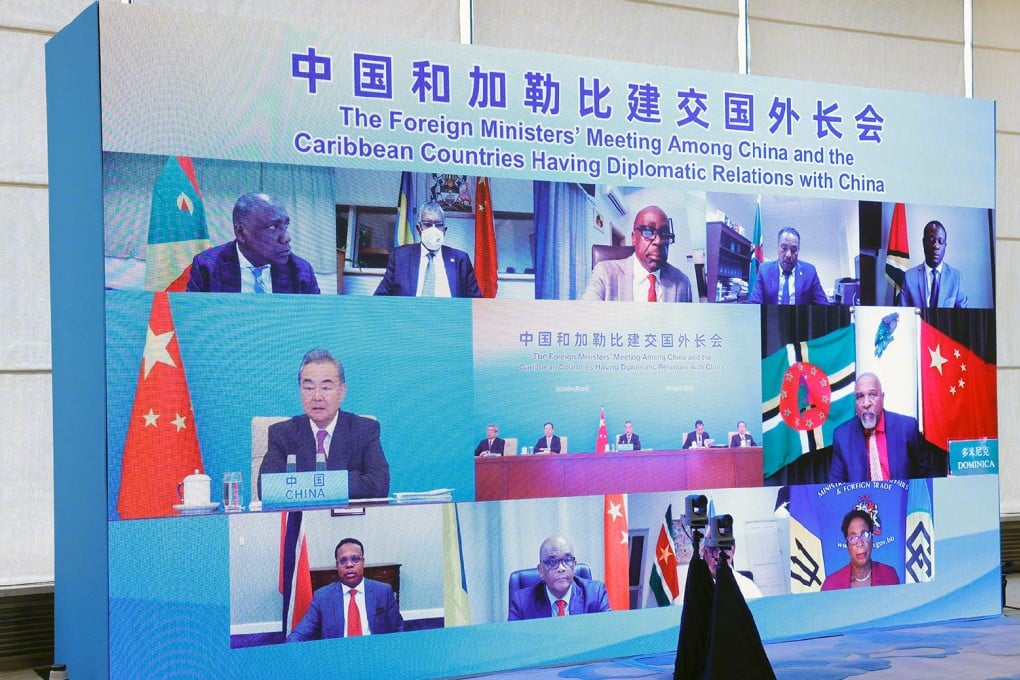China pledges disaster relief fund for Caribbean countries
- Fund to cover nine nations in the region but not details offered in foreign ministers meeting
- Beijing will also continue to offer economic and technical aid, Wang Yi says

China has unveiled a disaster relief fund for Caribbean countries as it tries to extend its political and economic reach into the strategically important region.
The fund was announced during a virtual summit on Friday between Chinese Foreign minister Wang Yi and his counterparts from nine Caribbean countries – Dominica, Antigua and Barbuda, the Bahamas, Grenada, Guyana, Jamaica, Suriname, Trinidad and Tobago as well as Barbados.
“China will continue to provide economic and technical aid to Caribbean countries without any political strings attached,” the Chinese foreign ministry quoted Wang as saying, without giving details of the fund.
China will also continue to promote livelihood-related projects and practical technologies.
The Chinese foreign minister called on all parties to strengthen solidarity and deepen cooperation amid a period of social, economic and security turbulence.
“The future and destiny of all countries are linked together as never before,” he said.
“The two sides should firmly grasp the historic opportunities, further unleash the potential of cooperation and build a higher level of partnership.”
